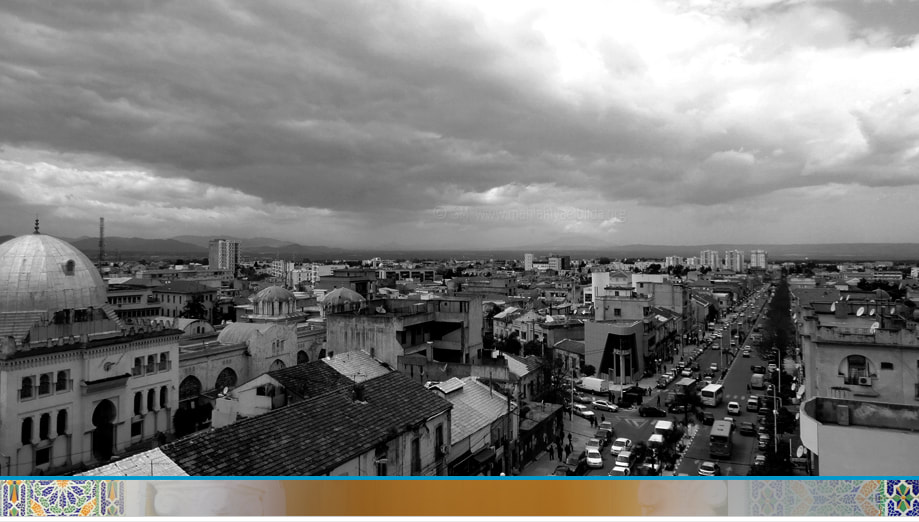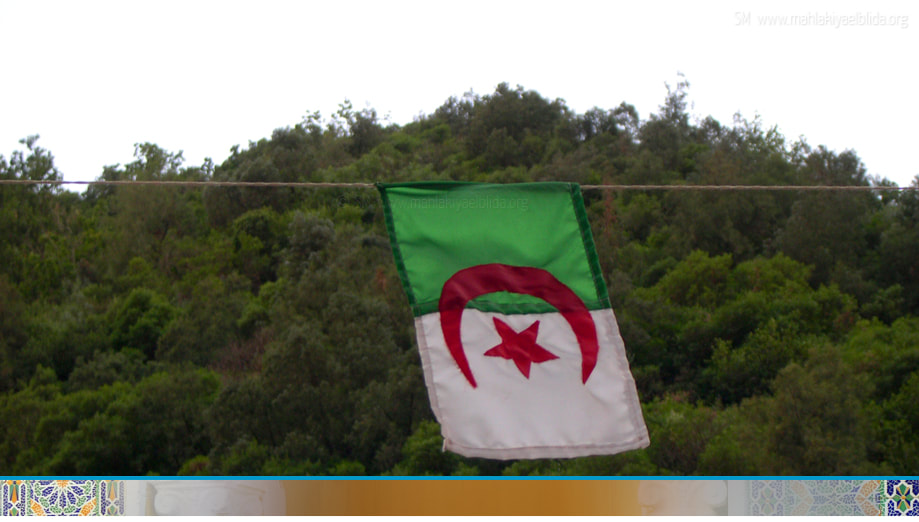Blida under French occupation
Blida was founded in the early XVI (16th) century. The word Blida originates from the classical Arabic word 'Boulaida', meaning small country or city. It is the diminutive of the Arabic word bilad (country)/belda (city), which becomes in Algerian Arabic dialect Blida and used by the French during their colonisation of Algeria.
Blida was blessed with natural water resources and fertile lands. It would go on to become the capital of the Mitidja region in Algeria. Blida's history is part of the whole region's history.
Blida was blessed with natural water resources and fertile lands. It would go on to become the capital of the Mitidja region in Algeria. Blida's history is part of the whole region's history.
The French invasion and the local resistance
The French army took control of Blida seven years after their invasion of Algeria in 1830. There was fierce resistance from the habitants and local tribes of Blida and the neighbouring towns and villages in the Mitidja region.
According to historical reports, on the 5th July 1830, just eighteen days after the fall of Algiers, the French army walked towards Blida and its neighbouring areas in the Mitidja region. Led by De Bourmont, commander of the French army, more than a thousand French soldiers took part in this mission. According to the French, this was a supposedly easy and simple military expedition. However, all did not go according to plan as the French fell under an organised ambush in Blida; led by the local tribes of Beni Salah, Beni Misra and many other tribes in the Mitidja plains. The French swiftly returned to Algiers. Notably, this was one of the first armed resistances against the French occupation.
According to historical reports, on the 5th July 1830, just eighteen days after the fall of Algiers, the French army walked towards Blida and its neighbouring areas in the Mitidja region. Led by De Bourmont, commander of the French army, more than a thousand French soldiers took part in this mission. According to the French, this was a supposedly easy and simple military expedition. However, all did not go according to plan as the French fell under an organised ambush in Blida; led by the local tribes of Beni Salah, Beni Misra and many other tribes in the Mitidja plains. The French swiftly returned to Algiers. Notably, this was one of the first armed resistances against the French occupation.
Bab Edzair French garrisson attacked by the localsA further attempt occurred in November 1830, this time led by Genaral Clauzel. The French headed to Medea with the aim of removing the Bey of Titeri (Medea,) Mustapha Boumzerag, from power. Part of their mission when heading to Medea, was to secure and control the town of Blida. A French garrison was built in Bab Edzair to control the area; a few hundred French soldiers were stationed here while the remaining soldiers headed towards Medea. A bloody battle between the local tribes and the French army took place near Medea, allowing the latter to enter Medea, replacing the Bey and building their garrison.
Meanwhile, the French garrison, which was set up in Bab Edzair, was attacked by the local tribes of Blida. It is reported that the French soldiers were running in all directions in a state of panic and fear when the attack began. A false message circulated among the locals that French soldiers had returned from Medea, causing the local fighters to retreat into hiding, fearing they would be outnumbered. Nonetheless, the civilian population heavily paid the price of resistance. This included the elderly, women and children. The town of Blida and its neighbouring towns and villages suffered enormously under the French military expeditions. According to some reports and writings, in November 1830, the French colonial army committed massacres in both Blida and in the region of the Mitidja against non-armed civilians. Blida 'the military garrison'Years later, during the period of 1836-38, the French built military garrisons in Dalmatie (east: present-day Ouled Yaiche) and Minich (south: present-day Bab Erahba); adding camps in Joinville (north-west: present day Zabana), Montpensier (north-east: present day Ben Boulaid) and also Chiffa and Beni Mered. This was with the aim to militarily control the area surrounding Blida. Nearly half of the town became a ‘military garrison’ during the time of the French colonisation of Algeria. However, it was not until 1839 that the French army took full command of the town. They built military camps, posts and garrisons for their troops, all in order to control the town and its surroundings areas. This was also a military strategy for the French to display its colonial might and power to protect their own community.
|
Blida's high school, Ibn Rochd (previously known as 'Duveyrier' at the time of French colonisation), had many of its students join the war for independence against the French. Some of them lost their lives to free the country.
The Colonists arrive
With the arrival of thousands of French and European colonies coming to live in Blida, the French started to develop the town with the introduction of administrative offices, banks, theatres, council, post office, public cafes etc. The look of the town’s architecture began to change; influenced by European and French architecture, their style of buildings and housing started to take over. However, as expected with the effects of colonialism, the two communities were clearly divided. This was most evident in the two markets: The Arab market (Placet el Arab) for the Arab autochthones near el Djoun in the south and the French market (Placet Enssara) in the north for the French colonists.
The old wall surrounding the town was demolished in 1926; long streets and boulevards such as Boulevard Trumlet (present-day: Abdellah el Aichi), Rue d' Alger, Rue Coulougli (present-day: Souk) and many others were built instead. Place d’Armes at the time of the French occupation, now more commonly known as ‘Place Ettoute’ (Place 1 Novembre 1954), became the feature and iconic square of the town. The square was used by the French for military parades and to celebrate local festivities. In the early 1930s, as many as two thousand European colonists came to Blida to work in the famous Joinville Psychiatric Hospital, also known as Frantz Fanon hospital.
The revolution to freedom
Despite all the development and the prosperity within the town, it was only a question of time before the start of the impending revolution, known as the war of independence to free the whole country of Algeria from the French colonisation.
As in all cities, towns, and villages across the entire country, many in Blida joined (many of whom lost their lives) in the 1954-1962 war of independence against the French army. The first chahid (martyr) in Blida was Kediri Omar, also known as Omar el Ghoul. The popular sports club of the town ‘USMBlida’ had 26 chahid (martyrs) who gave up their sporting career and fame in order to join the war for independence. Some notable names include: Brakni brothers, Hamoud Daidi, Zouraghi and numerous others died during the war.
History is a sensitive and delicate subject that relies on many factors. How many ancient written manuscripts of Blida are in existence? How much of this heritage was protected against theft, negligence and disintegrated through natural causes such as heat, light, inadequate storage, etc. How many preventive measures were there to preserve archives of centuries ago? R E A D M O R E >>















